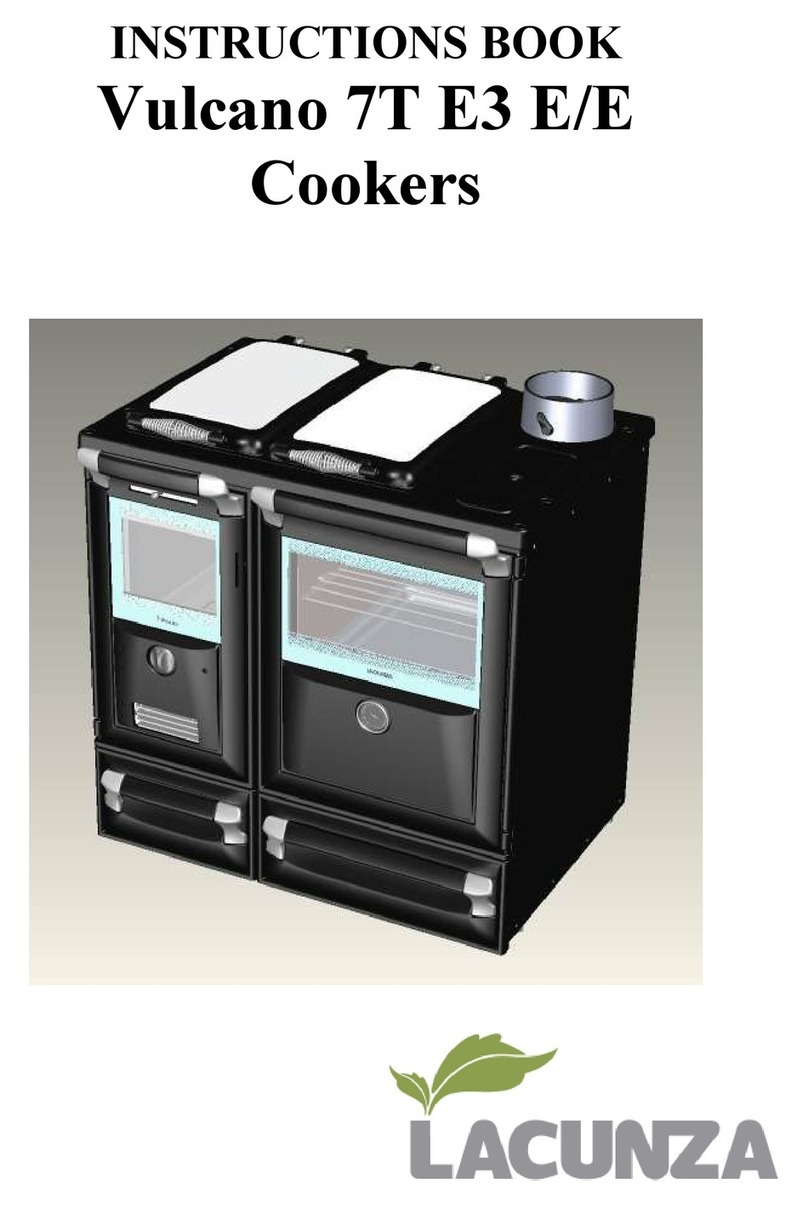INSTRUCTIONS FOR THE INSTALLER 5
2.
INSTRUCTIONS FOR THE
INSTALLER
2.1. Warning to installers
All local and national regulations,
including all those referring to national and
European standards, must be observed
when installing the appliance.
Installation of the appliance must be
performed by an authorised installer.
An incorrectly installed appliance may
lead to serious incidents (fires, creation of
harmful gases, deterioration of nearby
fixtures, etc.).
Lacunza’s liability is limited to the
supply of the material and does not include
installation of the appliance.
2.2. Room for installation
2.2.1. Ventilation of the room
The appliance needs to consume
oxygen (air) in order to work properly.
Ensure a suitable air supply in the room in
which the appliance is fitted. This quantity
of oxygen is additional to the oxygen that
we need in order to breathe (air renewal).
In order to ensure the high quality of
the air you breathe and to avoid potential
accidents resulting from high
concentrations of the gases produced by
combustion (mainly carbon dioxide and
carbon monoxide), it is absolutely crucial to
ensure the suitable renewal of the air in
the room in which the appliance is fitted.
the room must always have at least two
permanent grilles or openings to the
exterior in order to renew the air (one for
intake and the other for extraction).
For the installation of its appliances,
Lacunza recommends an additional section
for these openings. One of these two grilles
must be situated high up in the room (at
less than 30 cm from the ceiling) and the
other one low down (at less than 30 cm
from the floor). Both grilles must open
outdoors in order to renew the air in the
room with fresh air.
The minimum section that each of these
grilles must have depends on the nominal
output of the appliance in accordance with
the following table:
Figure No.2 - Guideline indications for
ventilation grilles
The appliance must always be used with
the door closed.
In rooms equipped with Controlled
Mechanical Ventilation, the system
extracts and renews the ambient air; in
such cases, the room is at slightly low
pressure and it is necessary to install a non-
closable outside-air inlet with a section of
at least 90 cm².





























